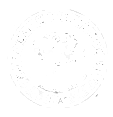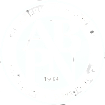Sleep disturbances and sleep disorders are commonly associated with neurological diseases, and neurological impairments of sleep reveal much about the brain circuitry involved in sleep regulation. Many neurological disorders are now recognized to cause disruptions of sleep. For example, pathological sleepiness is associated with neurological and neurodegenerative disorders such as Parkinson’s disease (PD), Alzheimer’s disease (AD), and progressive supranuclear palsy. Pathological sleepiness is also associated with neuromuscular disorders such as myotonic dystrophy, inflammatory conditions such as encephalitis or multiple sclerosis, and with traumatic or ischemic injury to the brain. In addition, conditions such as REM Sleep Behavior Disorder (RBD) are recognized as precursors of Parkinson’s disease. Conversely, Fatal Familial Insomnia (FFI), a prion disorder related to Creutzfeldt-Jakob disease, causes prolonged wakefulness.
Sleep is a powerful modulator of epilepsy, with some epilepsy syndromes occurring exclusively or predominantly during sleep. These include benign childhood epilepsy with centrotemporal spikes, autosomal dominant nocturnal frontal lobe epilepsy, and continuous spike-wave activity during sleep. Sleep deprivation has also been described as a risk factor for epileptic seizures, although alcohol use and work-related stress are confounding factors. Treatment of sleep disorders that fragment sleep, such as Sleep-Disordered Breathing (SDB), has improved seizure control in case series.
Sleep disorders can also occur as a consequence of treating neurological disorders. For example, pathological sleepiness may occur during treatment of Parkinson’s disease and other movement disorders with dopamine-related drugs. In addition, many drugs used to treat neurological disorders can cause excessive sleepiness or wakefulness.
Sleep disorders also interact in complex ways with neurological disorders, and are frequent after head trauma, stroke, encephalitis or in association with neuromuscular disorders. For example, stroke has been shown to be associated with SDB, and SDB likely decreases potential for recovery in stroke patients. Stroke may also produce SDB by interacting with the central regulation of breathing. Similarly, the intermittent hypoxia that accompanies SDB may hasten the neurodegenerative cascade in disorders such as PD and AD.
Neurological disorders provide models for understanding sleep circuitry in the brain. In addition, understanding sleep mechanisms and disorders will be integral to treating these neurological diseases.


 845-454-6491 (FAX)
845-454-6491 (FAX)





